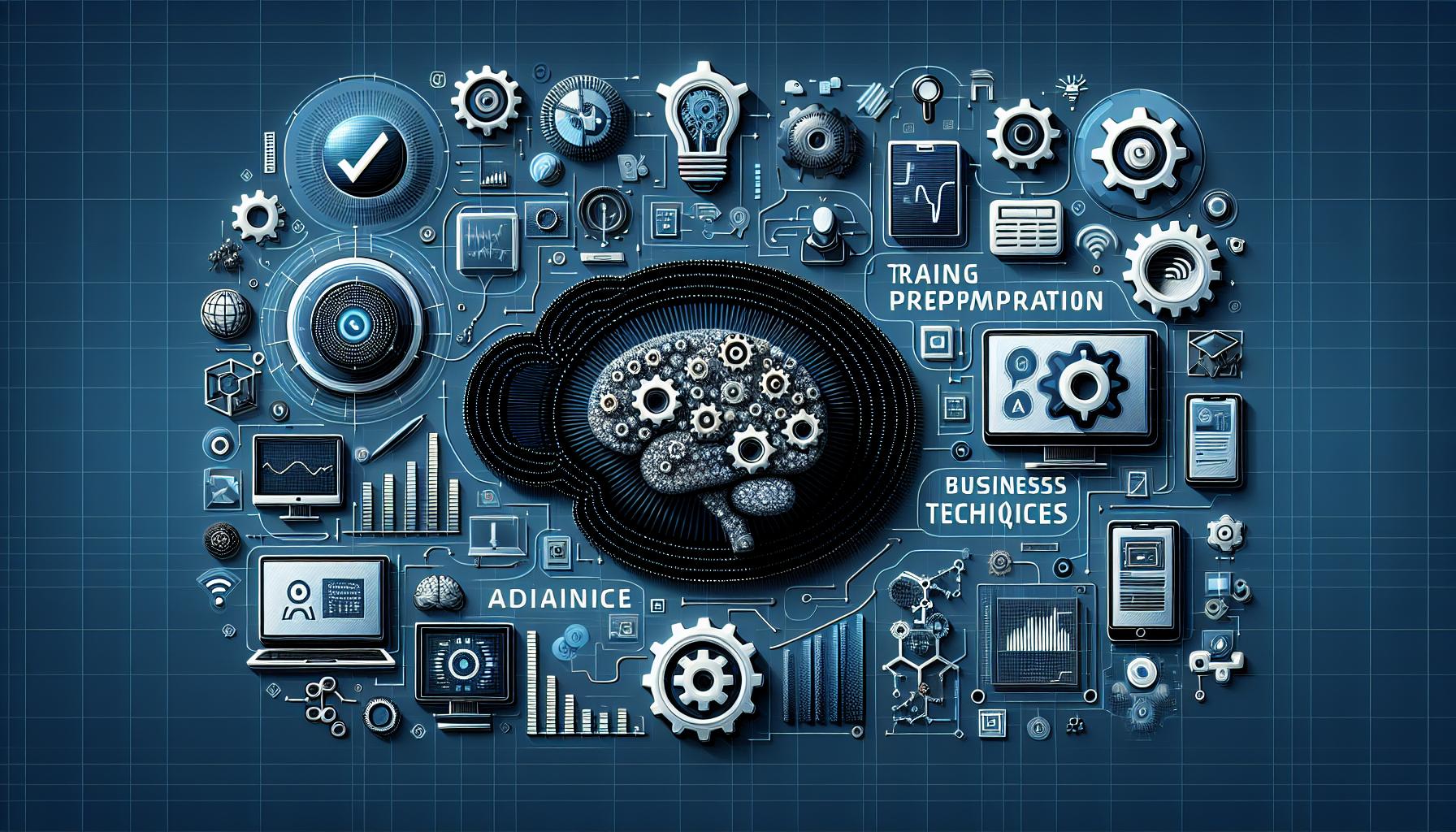Training Open AI Assistants: A Comprehensive Step-by-Step Guide

Introduction
Training an A.I. model is a crucial step in developing systems capable of human-like intelligence, including learning, problem-solving, and decision-making. This comprehensive guide will walk you through the process of training an A.I. model, from understanding the basics to fine-tuning for specific tasks.
Training an A.I. Model
Training an A.I. model involves teaching it to recognize patterns in data to make better decisions. Fine-tuning is a strategy where models trained on large datasets are adapted to smaller, task-specific datasets by continuing the training process.
Understanding A.I. and Model Training
Artificial Intelligence (AI) involves creating systems capable of tasks that typically require human-like intelligence. These tasks include learning, problem-solving, and decision-making. An A.I. model essentially consists of algorithms that make predictions based on input data. Machine Learning (ML), a subset of AI, allows machines to learn from data and improve performance autonomously.
Training a model from scratch requires a large amount of data and computational resources. Fine-tuning employs a pre-trained model that has already learned general patterns from a large dataset. This model is further trained on a smaller, specific dataset. Consequently, it applies its previously learned knowledge to new tasks, which often results in better performance with less data and fewer resources.
Preparing for Fine-Tuning
Success in fine-tuning depends on several key factors:
Choosing the Right Model
- Task Alignment: Outline your problem scope and expected model functionality. Choose models that excel in tasks similar to yours.
- Model Size and Complexity: Balance performance and efficiency. Larger models capture complex patterns better but demand more resources.
- Evaluation Metrics: Select relevant evaluation metrics for your task.
- Community and Resources: Opt for models with a large community and ample resources for troubleshooting and implementation.
Data Collection and Preparation
- Types of Data Needed: The required data type depends on your specific task and the data the model was pre-trained on.
- Data Cleaning and Annotation: Eliminate irrelevant data, handle missing or inconsistent data, and normalize the dataset. Ensure data is properly annotated for the model.
- Diverse and Representative Dataset: Ensure your dataset is diverse and representative to achieve more generalized and reliable predictions.
Setting Up the Training Environment
- Ensure you have the necessary hardware and software for the chosen A.I. model and framework. Large Language Models (LLMs) often require substantial computational power, typically provided by GPUs.
- Use frameworks like TensorFlow or PyTorch for A.I. model training.
The Fine-Tuning Process
Dataset Preparation
- Use a dataset relevant to your fine-tuning task, formatted according to OpenAI's Chat Completions API and stored as a JSONL file.
- OpenAI requires at least 10 examples for fine-tuning and recommends using 50 to 100 training examples.
Generating the API Key and Installing the OpenAI Library
- Sign up on the OpenAI official website, top up your credit balance, generate a new secret key, and install the Python OpenAI library.
Uploading the Training and Validation Files
- Upload the files using the Files API for fine-tuning jobs.
Creating a Fine-Tuning Job
- Create a fine-tuning job using the OpenAI SDK, specifying hyperparameters like epochs, learning rate multiplier, and batch size.
Analyzing the Fine-Tuned Model
- OpenAI computes metrics like training loss, training token accuracy, validation loss, and validation token accuracy during training. Monitor these metrics via the user interface or API.
Adjusting Parameters and the Dataset to Improve Performance
- Refine your training dataset and adjust hyperparameters to boost performance.
Using a Checkpointed Model
- Access checkpoints for the last three epochs of a fine-tuning job and validate checkpoint model results by running queries with a prompt.
Tips and Best Practices
- Ensure task-specific data is clean, diverse, and representative.
- Choose appropriate hyperparameters to avoid slow convergence or suboptimal performance.
- Manage resources effectively, as fine-tuning large models requires substantial computational resources and time.
Avoiding Pitfalls
- Balance your model's complexity and the extent of training to prevent overfitting (high variance) and underfitting (high bias).
- Regularly evaluate your model's performance on a variety of tasks to mitigate catastrophic forgetting.
- Use domain adaptation techniques to bridge significant gaps between fine-tuning data and pre-training data.
Saving and Reusing Models
- Save your model's state to reuse it later, including the model parameters and any state of the optimizer.
Ethical Considerations
- Pre-trained models can inherit biases, which may be exacerbated during fine-tuning. Opt for pre-trained models tested for bias and fairness if unbiased predictions are required.
- Implement robust post-processing and validation mechanisms to handle unintended outputs.
- Monitor your model's performance regularly and re-fine-tune as necessary to address model drift.
Advanced Techniques and Further Learning
- Advanced techniques in fine-tuning LLMs include Low Ranking Adaptation (LoRA) and Quantized LoRA (QLoRA).
- Parameter Efficient Fine-Tuning (PEFT) adapts models efficiently with minimal trainable parameters.
- DeepSpeed and ZeRO optimize memory usage for large-scale training.
- Additional advanced training techniques include transfer learning and reinforcement learning. Transfer learning applies knowledge learned from one problem to another related problem, while reinforcement learning involves an agent learning to make decisions by taking actions in an environment to maximize a reward.
How RAIA Helps
RAIA offers a comprehensive platform that simplifies the training and fine-tuning of A.I. models for specific tasks. With advanced tools and user-friendly interfaces, RAIA makes it easy to prepare data, set up the training environment, and monitor model performance. Whether you're beginning from scratch or fine-tuning a pre-trained model, RAIA supports the entire A.I. model training lifecycle, ensuring high-quality, efficient, and effective outcomes.
By following this step-by-step guide and leveraging RAIA's powerful resources, you can train efficient and robust A.I. models capable of performing a wide range of tasks.




